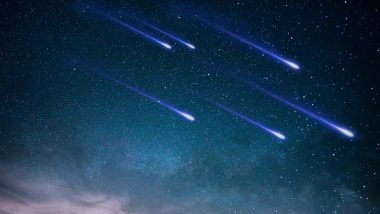The end of the year has some great celestial events for stargazers. We recently had the solar eclipse, and Saturn, Jupiter and the Moon formed a triangle in the sky this week. As we gear up for the Winter Solstice 2020, astronomy fans will be able to enjoy the final meteor shower of the year, as the Ursids gets underway. The meteor shower takes place every year during December and is visible for quite a number of days. As a pre-Christmas visit to Earth, Ursids meteor shower 2020 is visible and already shooting stars for the skygazers. So, when and how you can see the shooting stars? From Ursids meteor shower 2020 dates, how to watch it and more, in this article, we bring you everything about the year’s final meteor shower.
What is Ursids Meteor Shower?
Unlike the Geminids, the ursids meteor shower is tame. Astronomy experts suggest that viewers might see up to 10 shooting stars each hour as it reaches its peak. The Ursids meteor shower is an annual activity, and begins from December 17. The shower is named Ursids because the meteors seem to radiate from the direction of the constellation. Ursa Minor in the sky. Observations have established its relationship with comet 8P/Tuttle.
Ursids Meteor Shower 2020 Dates
Ursids meteor shower is already active from December 17, and the shower is said to reach its peak in the early hours of December 22, post the winter solstice. The meteor shower will only be visible for skywatchers across the northern hemisphere.
How to See the Ursids Meteor Shower?
The best time to see the shooting stars is a little after midnight. If the weather stays clear, there are excellent conditions for spotting the meteors. One would not need binoculars or a telescope. According to experts, a binocular or telescope could actually hinder your experience because they are designed to magnify the stationary objects. You can catch the quick flash of a meteor with your naked eye.
This is the final meteor shower of the year, that will coincide with the great conjunction of Jupiter and Saturn. After this, the Quadrantid meteor shower is slated to take place in January 2021, and will only be visible for people across the northern hemisphere.
(The above story first appeared on LatestLY on Dec 19, 2020 06:40 PM IST. For more news and updates on politics, world, sports, entertainment and lifestyle, log on to our website latestly.com).













 Quickly
Quickly


